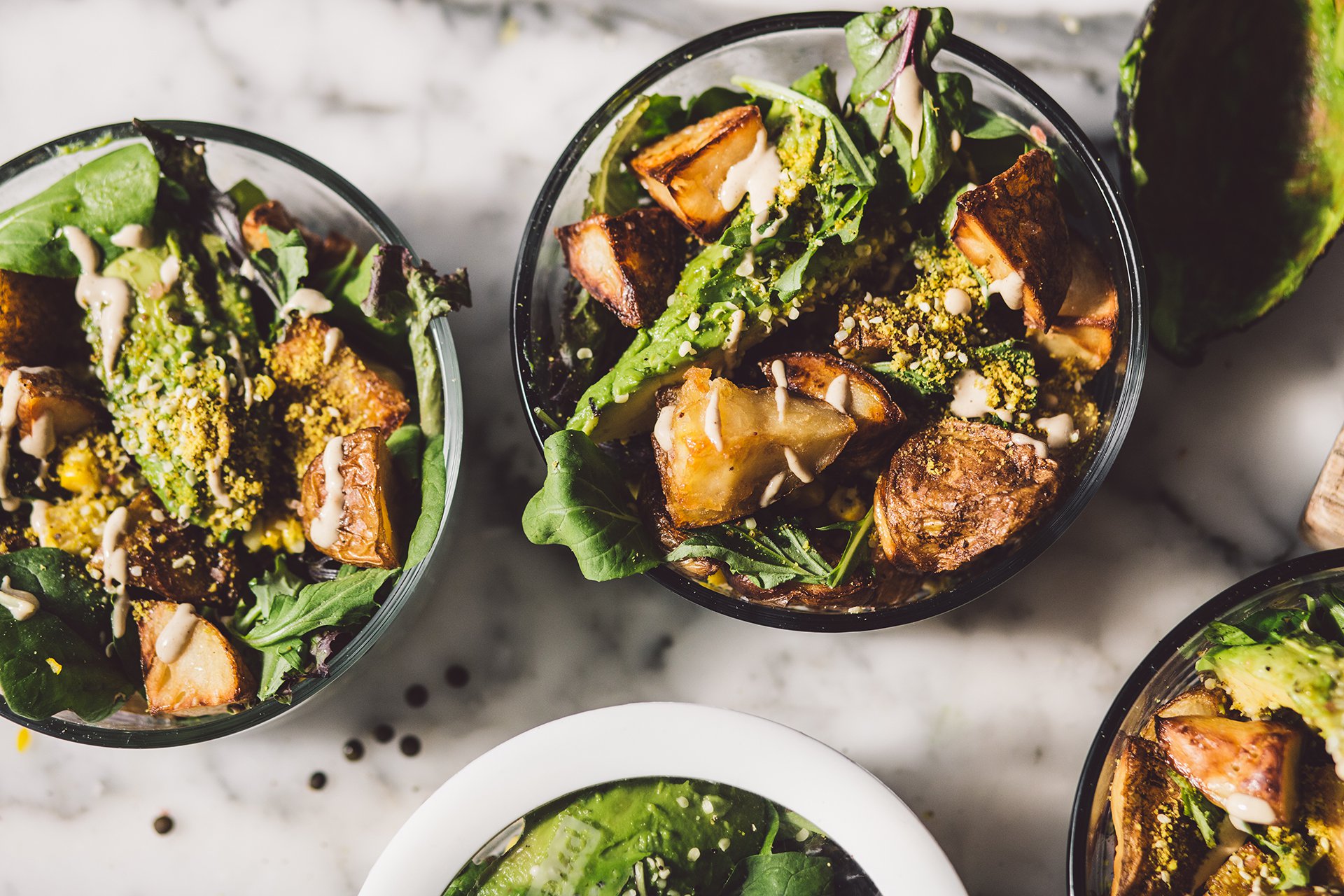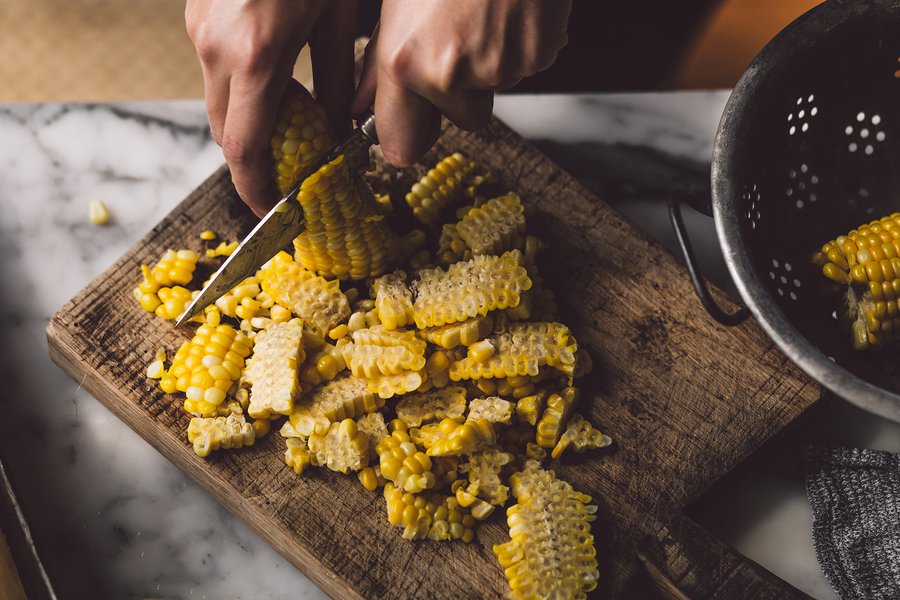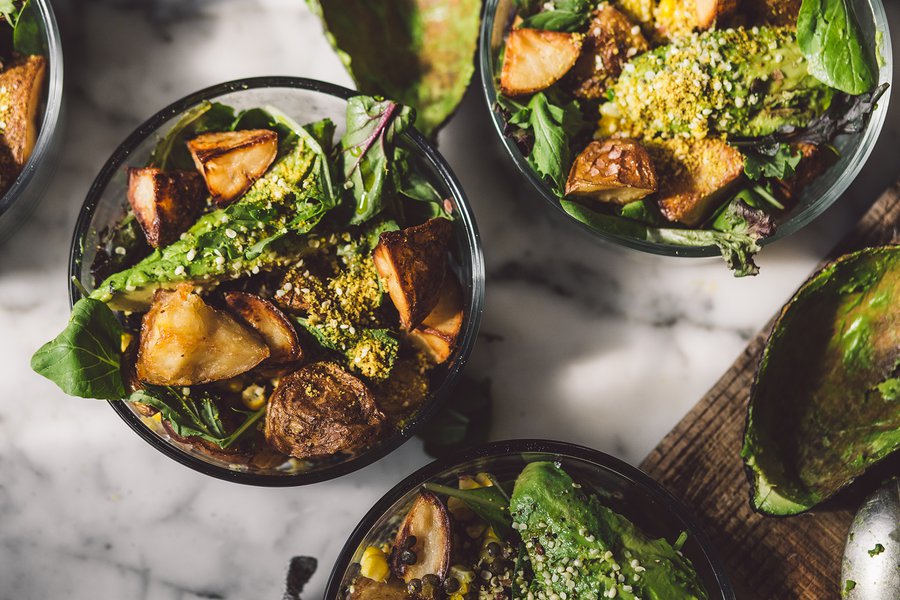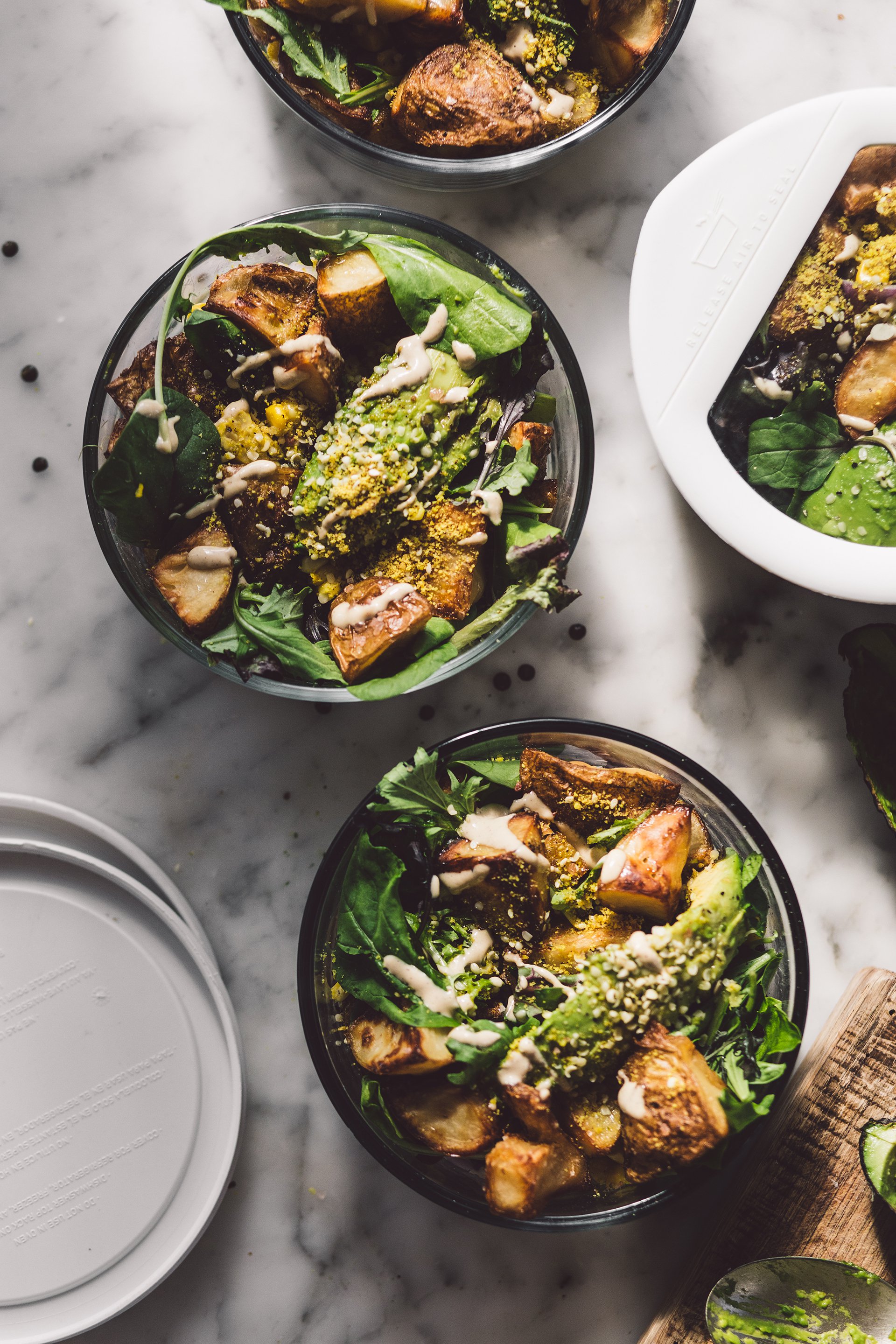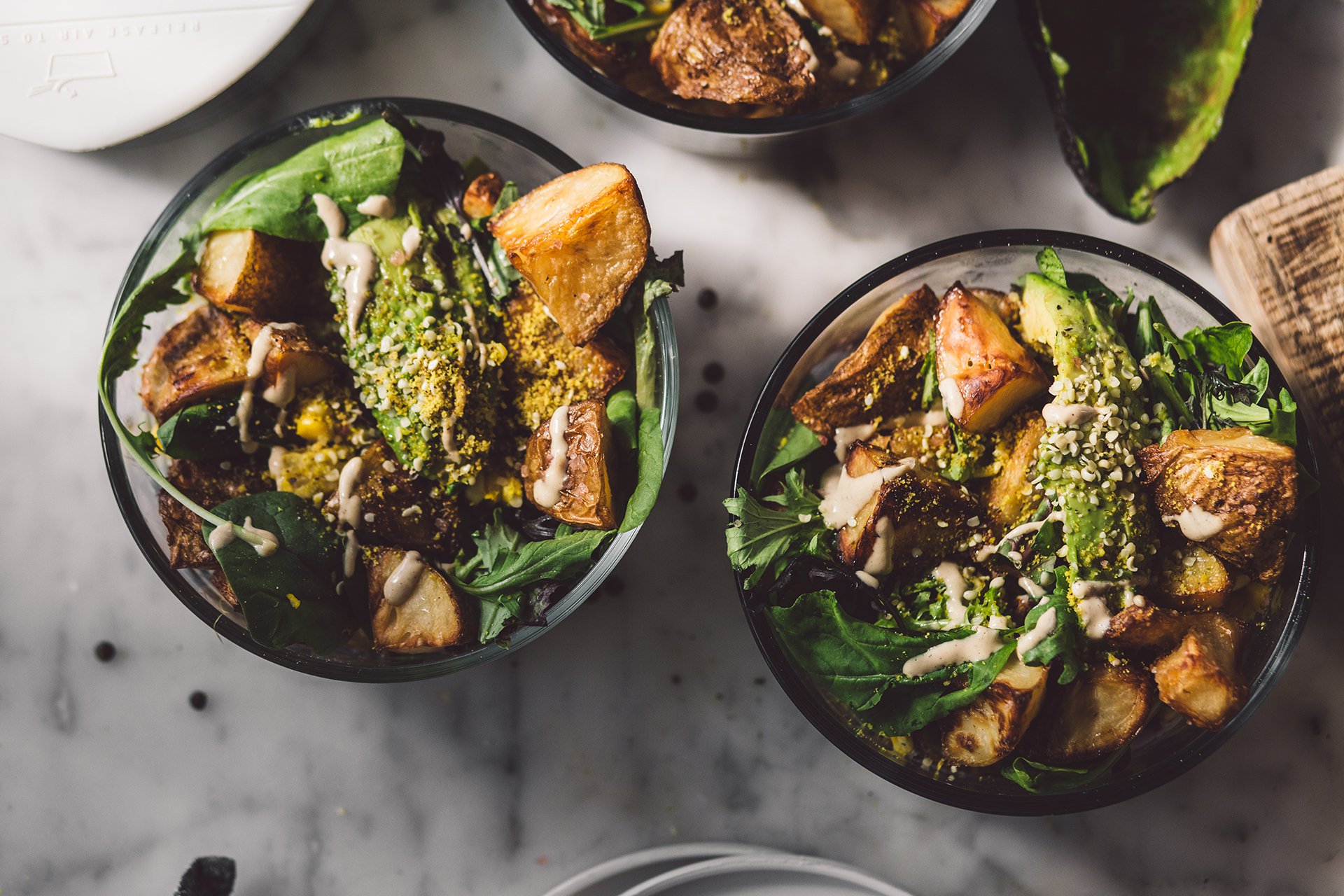Batch cook your lentils and make this lentil potato salad bowl
When faced with the question, “What should I have for dinner?” some variation of this bowl is the answer — I find the grounding starches and fibre deeply satisfying. Fibre is essential for digestion, regulating hormones, nourishing our detoxification organs, your microbiome. It is required for your gut to thrive — fibre is a vital skin food. I write more about the skin-gut axis here.
Here I’ve included a list of high fibre foods so you can prepare impressive, body nourishing bowls more effectively with a little planning. Improvise and adapt depending on what you have in your pantry. We need 25 to 30 grams of fibre per day. It all adds up!
Split peas: 16.3 grams per cup
Split peas are the dried, split and peeled seeds of peas, they cook quickly with no soaking required so I always have a jar in the pantry. Split peas are also high in protein, 16 grams per cup. They blend perfectly with thermogenic spices, usually on high rotation, used in dhal during cooler months. More recently I made this hummus with yellow split peas, and I am addicted!
Lentils: 15 grams per cup
I’ve come to rely pretty heavily on lentils as the grounding base of the majority of my salad bowls. They’re also high in protein which makes meal prep easier — 18 grams per cup. Again no soaking or rinsing required so super convenient. Just add to rice, with a big serving of vegetables, generous spoonfuls of hummus, some ferments and anything else you fancy.
Black beans: 15 grams per cup
There’s usually a jar of black beans soaking countertop at home, another mainstay for evening meals with my partner. With as much plant protein as fibre, black beans are a staple for those who are or lean heavily vegan.
Chickpeas: 12.5 grams per cup
Another pantry staple frequently soaking countertop, chickpeas, also known as garbanzo beans are the main ingredient in hummus which I make every week. In large batches. During winter months I double down on this staple ingredient in this cauliflower chickpea curry.
Kidney beans: 11.3 grams per cup
Alternating pulses and grains, kidney beans are another frequent addition to our meals. I also buy kidney beans in bulk. Once you create the habit of soaking, you’ll have a steady supply of cooked beans in the fridge for a nourishing meal in no time. Kidney beans also contain good amounts of iron.
Peas: 8 grams per cup
A long time favourite peas are a freezer staple. During the winter months, I prepare this pea soup frequently. It’s ideal for meal prep. Vitamin A, iron, folate, thiamin, Vitamin C and manganese are some of the benefits.
Avocado: 7 grams per half cup
When in season our house compost bins are piled high — we consume a lot of avocados! You can find more information on composting at home here. Loaded with healthy fats and high in potassium, I’ll include avocado in most of our meals, or if I am home alone, a quick lunch of avocado on sourdough toast will keep me satisfied.
Oats: 6.5 grams per cup
Inexpensive with a low glycemic index and high levels of fibre and trace minerals, oats are a mainstay in my pantry. Soaked oats are my thing. I prepare these daily with LSA, antioxidant high powders and nut butter. Oats are not gluten-free, but if you can tolerate them, eat them. Oats contain a soluble fibre called beta-glucan — amazing for blood sugar and cholesterol levels.
Psyllium husk: 5 grams per tablespoon
More medicinal, psyllium is a soluble fibre commonly used as a gentle laxative. Psyllium passes through your digestive system without being completely absorbed. Instead, absorbing water from the colon and forming a gel-like mass promoting efficient, healthy elimination. To ensure optimal digestive tract hydration keep your water intake high. Add one tablespoon of psyllium husk to a glass of water or other liquid. Hydrate and cleanse.
Chia seeds: 5 grams per tablespoon
Nourishing on a cellular level chia seeds have enough fibre and protein to keep you full for hours. Packed with antioxidants and Omega-3s, I’ll often use them as a thickener in my oats, or use them in your smoothies. My boyfriends’ mother usually has a glass of chia seeds soaking in her fridge. You can supplement or go straight to the source.
Ground flax seeds: 3 grams per tablespoon
One of the richest sources of plant-based Omega-3s I add ground flaxseeds to my soaked oats to boost my intake of both fibre and protein. I use ground flaxseed over chia as a substitute for eggs by soaking 1 tablespoon ground flax seeds in 2½ tablespoons water. I also highly recommend keeping ground flax or chia seeds in the fridge for optimal freshness. Sprinkle them over your food on the daily.
Dark chocolate: 3.1 grams per 1-ounce (10.9 grams)
Also, a pantry staple, dark chocolate — anything over sixty percent cacao is packing an antioxidant high and fibre. So it makes this list. Full disclosure I do work with Pana Organic, their Eighty% is insanely delicious. These nutrient-dense bars must be kept in the fridge if you can “keep” them at all! Another favourite currently on high rotation is Pico Super Dark. I’m working through all the bars.
I hope this high fibre foods list helps guide your meals, and you to a higher state of health. If you have any specific challenges, send me an email for more personalised recommendations.
